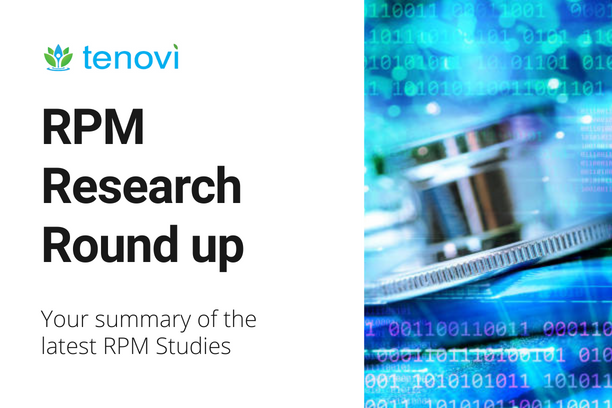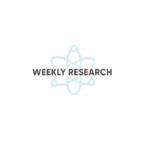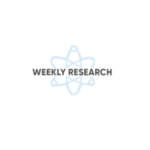This week’s research round-up summarizes 5 new remote patient monitoring (RPM) research solutions in diabetes, pregnancy, cancer care, and green healthcare. Beyond the COVID-19 pandemic, remote patient monitoring is helping to lower patients’ need for high-cost hospital monitoring. In addition, patients are often monitored from home, which has been shown to improve the patient experience and cut healthcare costs. The following 5 RPM research solutions in this article cover the use of remote patient monitoring:
- The management of diabetes in pregnancy
- Glucose meter use for patients with insulin-treated type 2 diabetes
- Cloud and IoT-based green healthcare system
- Exercise strategies for improving physical activity in colorectal cancer patients
- Gynecologic and urologic surgical oncology
1) RPM Research Solutions in Diabetes in Pregnancy is Associated with Improved Maternal and Neonatal Outcomes
https://www.sciencedirect.com/science/article/abs/pii/S0002937823001163
Telehealth tools, such as remote patient monitoring, try to improve the care of diabetes during pregnancy. Bluetooth remote patient monitoring medical devices such as glucometers collect and automatically upload measured glucose values to physician portals so that physicians can review the data and update treatment plans. However, some health monitoring requires patients to manually log glucose readings and submit them to their physician. This study examined the data from 533 patients and compared 173 patients’ vital sign data from paper logs to 360 patients managed with RPM devices. 176 used RPM device integration and 184 manual entry.
The RPM research solutions group of patients submitted more readings than the other group. They were more likely to achieve glycemic control in the preferred target range and reach the target capacity sooner than patients managed with paper logs. In addition, RPM patients had lower rates of preeclampsia. Their infants had lower rates of neonatal hypoglycemia in the first 24 hours of life. The authors found that remote patient monitoring for managing diabetes in pregnancy is superior to a traditional paper-based approach in achieving glycemic control and is associated with improved maternal and neonatal outcomes.
2) Telemonitoring With a Connected Glucose Meter Improves Glycemia Among People With Insulin-Treated Type 2 Diabetes
https://journals.sagepub.com/doi/abs/10.1177/19322968231157387
The authors of this single-center study of 40 people reviewed whether telemonitoring can be used to lower hemoglobin A1c (HbA1c) in people with insulin-treated type 2 diabetes. Participants in this RPM research solutions study used a remote glucose meter along with a smartphone application. In addition, they sent their physicians weekly blood glucose diaries via email. After review, physicians communicated adjustments in insulin doses. Telemonitoring and titration of insulin using the glucose meter resulted in significant improvements in glycemia. There was also a reduction in HbA1c, an increase in PIR, and a reduction in glycemic variability without any increase in hypoglycemia.
3) An Integrated Scalable Framework for Cloud and IoT-based Green Healthcare System
https://ieeexplore.ieee.org/abstract/document/10056935
By 2023, the Internet of Things (IoT)-connected devices are expected to have surpassed 40 billion. That means there will be a more considerable need for power. In addition, developments in IoT-enabled cloud computing have increased interest in “green” computing of IoT-cloud-based systems that facilitate remote patient monitoring and support. Definitions of “green computing” refer to environmentally conscious and efficient systems. Information technology (IT) eco-efficiency is the research and practice of designing, manufacturing, utilizing, and disposing of IT hardware with as little environmental impact as possible.
The study focused on developing an IoT-based scalable framework for intelligent healthcare systems integrated with cloud-based mobile applications. The authors proposed a three-layered architecture. The first layer is an IoT-based data collection layer. The second layer is a sophisticated cloud system that enables massive data analysis from individual patients and hospitals for potential disease forecasts and pattern discovery. The final layer suggests improving real-time data exchange and treatment efficiency by analyzing data using interactive patient monitoring.
When remote patient monitoring medical devices use a sleeping state in the sensors, much less energy is consumed. The latest technologies provide shallow and deep sleep models for when they are not used. The authors emphasized using Bluetooth Low Energy (BLE) protocol to achieve green technology. Cloud services provide a secure and efficient method for storing and managing health data. This study proposes a healthcare system outperforming existing storage methods for system architecture, energy efficiency, data availability, and better treatment planning.
RPM Research Solutions Green Recommendations
The study offers additional recommendations on methodologies that meet the quality of service needs of IoT applications and new trends and research views for energy conservation in IoT networks. The authors summarize the main accomplishments of their proposed methods here:
- An integrated and scalable framework for IoT and cloud-based platforms have been proposed for individualized healthcare service and to monitor patients’ well-being.
- Implemented an IoT and cloud-based mobile application for patient monitoring and interaction to collaborate with all the doctors, patients, and healthcare centers all in one platform.
- Several techniques have been used during the implementation phase of the proposed system. The goal of using numerous health monitoring sensors is to verify that each sensor functions with our cloud-based mobile application.
- Analyzed the Green attribute of the proposed system to evaluate the energy efficiency supported by experimental data. The authors presented further enhancements to make the system greener by using energy-efficient communication protocols (Bluetooth Low Energy version 5 or higher)
- Addressed the data availability issue faced by the research community and have depicted a few scenarios which show the main obstacle for healthcare research, especially in developing countries.
4) Remote and Unsupervised Exercise Strategies for Improving the Physical Activity of Colorectal Cancer Patients: A Meta-Analysis
https://www.mdpi.com/2227-9032/11/5/723
Exercise interventions with remote patient monitoring can improve physical activity in colorectal cancer patients (CRC). The CRC patients in this meta-analysis reported improved muscle strength and mental health and reduced sensory neuropathic symptoms. Supervised exercise training improves the functional capacity following colorectal cancer resection while promoting faster recovery to regular patients’ activities.
The authors note that findings from Fisher et al. show that new remote technologies are valid alternatives to inform, motivate, and remember the physical activity benefits for patients and ultimately improve adherence. Based on the analysis, remote and unsupervised exercise strategies effectively enhanced the biological activity in CRC patients.
5) RPM Research Solutions in Gynecologic and Urologic Surgical Oncology
https://onlinelibrary.wiley.com/doi/full/10.1002/jso.27222
Patients with cancer spend fewer days in the hospital after surgery due to the development of less invasive surgical approaches. Thus, allowing postoperative recovery to occur at home. In addition, RPM research solutions are often used to track and monitor postoperative recovery. The data collected and transmitted for physicians to review the potential to identify problems early, prompting timely interventions before conditions worsen.
This paper provides an overview of the research on remote monitoring in gynecologic and urologic surgical oncology with to goal of evaluating the following:
- Types of remote monitoring approaches
- Types of PGHDs measured
- Outcomes associated with remote monitoring
Patients requiring urologic and gynecologic cancer surgery often experience symptoms and rapid functional capacity decline postoperatively. Remote patient monitoring is one potential approach to assess and promote postoperative recovery. This review of published literature suggests thatRPM research solutions in urologic and gynecologic cancer surgery is feasible and acceptable and may serve as a viable approach for tracking postoperative recovery and care. However, the researchers note that additional research is needed to determine the impact of remote patient monitoring on surgical, clinical, and patient-centered outcomes, the cancer care delivery system, and surgical oncology care workflows.
Tenovi helps chronic care, telehealth, and RPM software companies transform healthcare and reduce hospital readmissions for their healthcare clients and a better future. Contact Tenovi today for a free demo and consultation.






